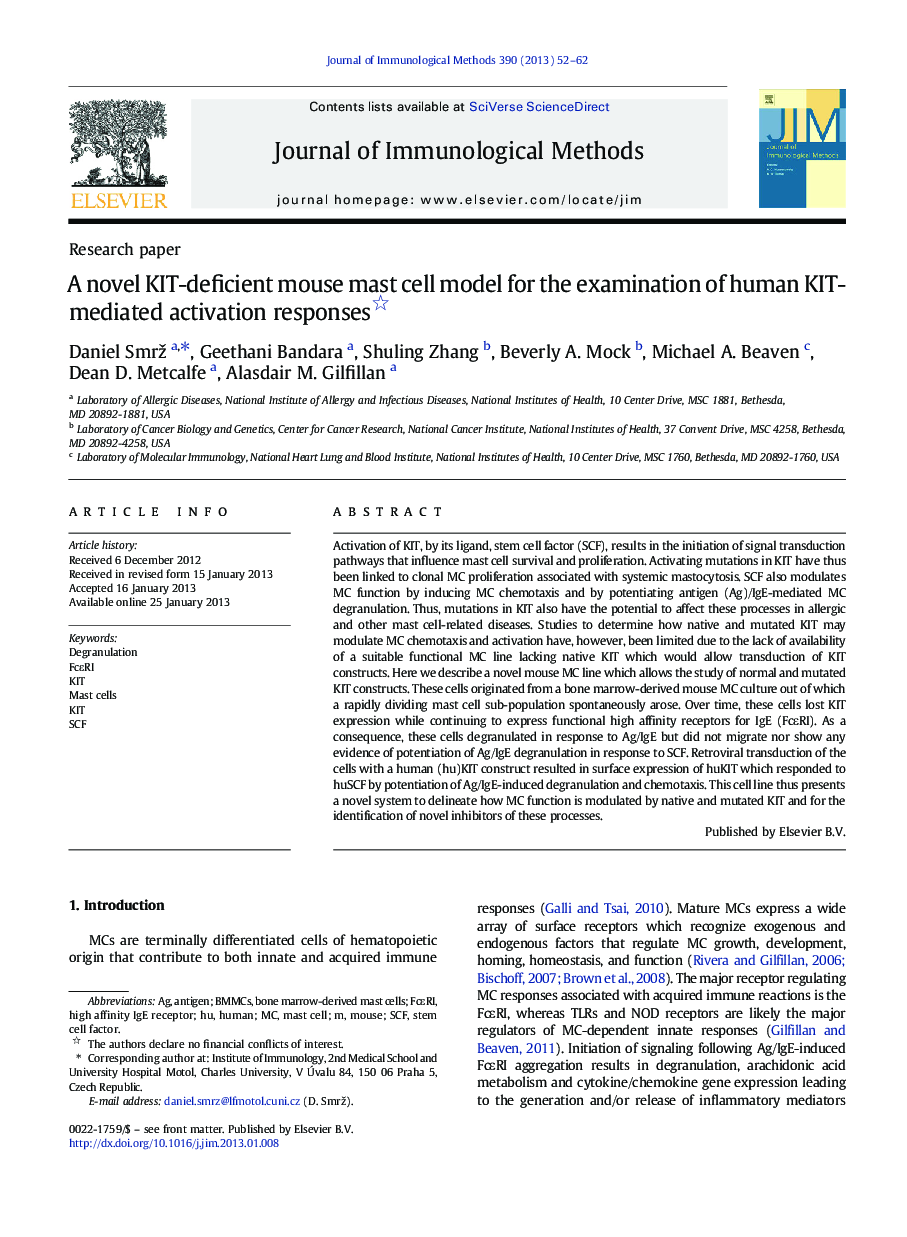| Article ID | Journal | Published Year | Pages | File Type |
|---|---|---|---|---|
| 2088273 | Journal of Immunological Methods | 2013 | 11 Pages |
Activation of KIT, by its ligand, stem cell factor (SCF), results in the initiation of signal transduction pathways that influence mast cell survival and proliferation. Activating mutations in KIT have thus been linked to clonal MC proliferation associated with systemic mastocytosis. SCF also modulates MC function by inducing MC chemotaxis and by potentiating antigen (Ag)/IgE-mediated MC degranulation. Thus, mutations in KIT also have the potential to affect these processes in allergic and other mast cell-related diseases. Studies to determine how native and mutated KIT may modulate MC chemotaxis and activation have, however, been limited due to the lack of availability of a suitable functional MC line lacking native KIT which would allow transduction of KIT constructs. Here we describe a novel mouse MC line which allows the study of normal and mutated KIT constructs. These cells originated from a bone marrow-derived mouse MC culture out of which a rapidly dividing mast cell sub-population spontaneously arose. Over time, these cells lost KIT expression while continuing to express functional high affinity receptors for IgE (FcεRI). As a consequence, these cells degranulated in response to Ag/IgE but did not migrate nor show any evidence of potentiation of Ag/IgE degranulation in response to SCF. Retroviral transduction of the cells with a human (hu)KIT construct resulted in surface expression of huKIT which responded to huSCF by potentiation of Ag/IgE-induced degranulation and chemotaxis. This cell line thus presents a novel system to delineate how MC function is modulated by native and mutated KIT and for the identification of novel inhibitors of these processes.
► We describe a unique KIT-deficient functional mouse mast cell line. ► Readily transducible with functional human KIT ► Utility for determining functional consequences of activated human WT and mutated KIT ► Useful for screening for potential inhibitors of human KIT activity
